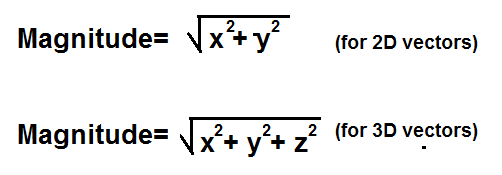

These problem sets focus on cell voltage for redox reactions - both voltaic and electrolytic cells at both standard and non-standard conditions. If you are talking about Earth, there are some places where the acceleration due to gravity is different, but that is only due to abnormal events (Earth's buldge, mountains, etc. Force is given by the celebrated newton’s law of motion: F m (mass) x a (acceleration) Impulse is a large force applied in a very short time period. We are planning to make 8 ready-to-use problem sets on the topic of oxidation-reduction and electrochemistry. (It would also go higher which would mean more distance). The equation or the formula for force can mathematically be expressed in the form of: F ma Where, m mass a acceleration It is articulated in Newton (N) or Kgm/s 2. Keep in mind that, by convention, counterclockwise is the positive direction and clockwise is the negative direction. The units of angular acceleration are (rad/s)/s, or rad/s 2. The velocity as a function of time is: (8.1.9) v ( t) d d t x ( t) d d t A sin ( t + ) A cos ( t + ) We note a couple of features of. t, where is the change in angular velocity and t is the change in time. I believe that part seven is causing some issues. For instance, if you would try this same experiment on the Moon, it would take longer for it to fall back since the acceleration due to gravity is slower. Once we have a formula for the position of an object following simple harmonic motion, we can use the usual calculus tools to determine the velocity and acceleration at various times as well. VIDEO ANSWER: There is a question about the direction of the magnetic force due to the magnetic field and the current in that field.

To answer your other question, the time does vary from place to place due to different gravity. This means that only at that small point of time, exactly at 6 seconds (to infinite precision of digits), it will have exactly 0 m/s. At 6.000000000000000000000000001 seconds, the object has velocity (which is really really really close to zero but not exactly zero). Only at exactly 6 seconds the ball has 0 m/s. This means that at 5.9999999999999999 seconds, the object still has some velocity. To visualize this, let's say for example, the object reaches zero velocity 6 seconds when it is thrown. The object will stay at 0 velocity for an infintensimally small time period (it doesn't last long). The gravitational field strength is directly proportional to mass creating the field and inversely proportional to the square of the distance. The magnet initially has a magnetic field strength of 10 T, and is then increased to 20 T at its new distance. G g g g is the gravitational field strength A magnet is initially 0.6 m away and is moved to a distance of 0.1 m away from the loop of wire with a radius of 15 cm. SI units of m s 2 \dfrac g = m 2 F g = r 2 G m 1 g, equals, start fraction, F, start subscript, g, end subscript, divided by, m, start subscript, 2, end subscript, end fraction, equals, start fraction, G, m, start subscript, 1, end subscript, divided by, r, squared, end fraction The numerical value of the gravitational field at a point in space. ExampleĬalculate the force needed to accelerate a 22 kg cheetah at 15 m/s².Ĭalculate the force needed to accelerate a 15 kg gazelle at 10 m/s².Gravitational force ( F g F_g F g F, start subscript, g, end subscript )Īttractive force between two objects with mass.Ī model explaining the influence an object extends to produce a force on other objects. Inertial mass is a measure of how difficult it is to change the velocity of an object. The ratio of force over acceleration is called inertial mass. In other words, the acceleration of an object increases if the resultant force on it increases, and decreases if the mass of the object increases. inversely proportional to the mass of the object.

proportional to the resultant force on the object.In these equations, 0 and v 0 are initial values, t 0 is zero, and the average angular velocity and average velocity v are. The equation shows that the acceleration of an object is: Table 6.3 Equations for Rotational Kinematics. acceleration ( a ) is measured in metres per second squared (m/s²).mass ( m ) is measured in kilograms (kg).Newton's Second Law of motion can be described by this equation: Newton's Second Law Force, mass and acceleration


 0 kommentar(er)
0 kommentar(er)
